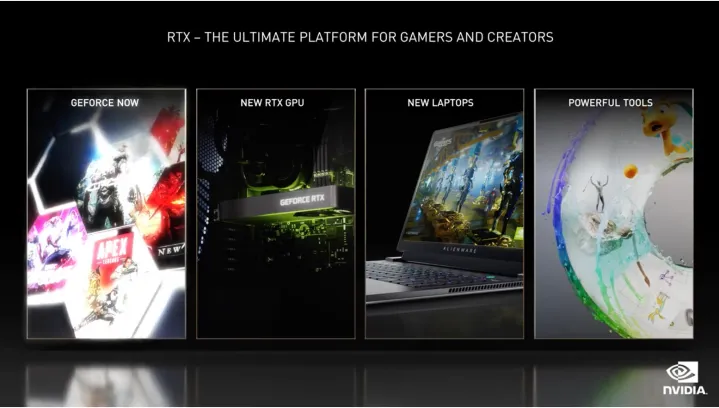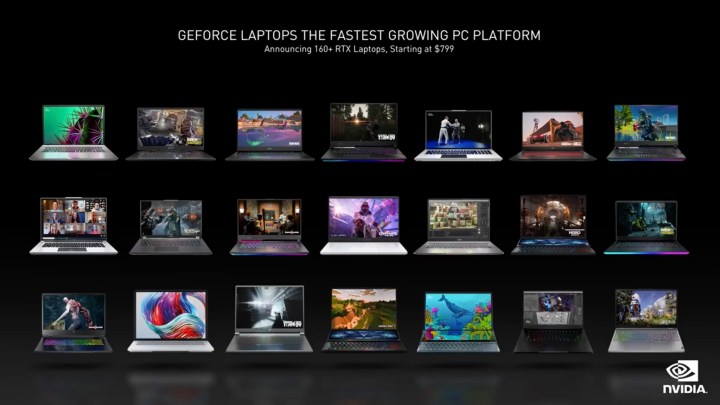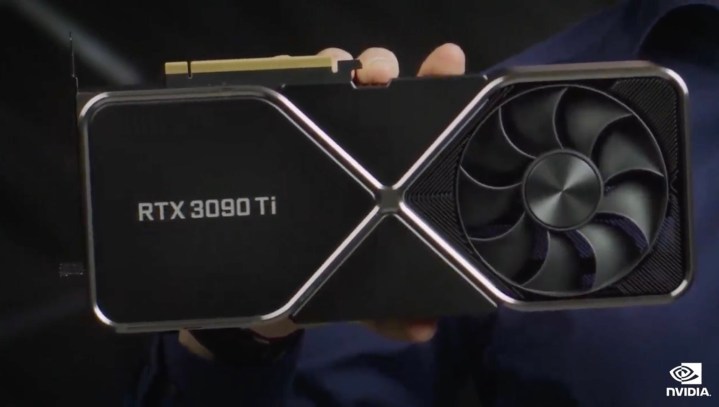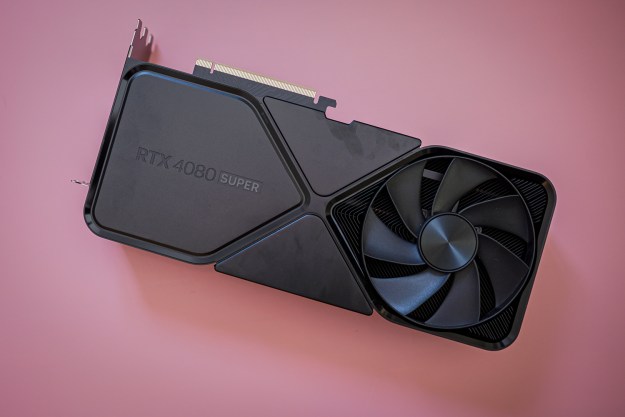Nvidia made a big splash at CES, announcing new graphics cards targeting mobile and desktop gamers, updates to its autonomous driving efforts, and new partnerships that expand its GeForce Now game streaming platform to even wider audiences. Ahead of the show, there were rumors that Nvidia would augment its RTX GPU lineup, and the company did not disappoint during its jam-packed CES “Special Address” keynote. In total, the company revealed that more than 160 laptops will launch with new mobile GeForce RTX 3000 series graphics card.
“Ray tracing and A.I. are defining the next generation of content,” Nvidia GeForce Business Vice President Jeff Fisher said, revealing that the more than 160 new laptop designs are expected to serve more than 3 billion gamers and tens of millions of content creators globally.

Noting that the market is huge, Nvidia said it expects that gaming will add more than 150 million new gamers this year and that 750 million people watched gaming content online last year alone. Nvidia has shipped more than a billion GPUs to meet the needs of gamers and creators.
GeForce RTX 3080 Ti, RTX 3070 Ti for laptops

Headlining the company’s mobile GPU lineup is the addition of the new GeForce RTX 3080 Ti graphics card, which Nvidia claims is the first 80-class Ti card that will be available on mobile PCs. In the last year alone, Nvidia claimed that 35% more laptops were sold.
As more gamers and creators turn to laptops, Nvidia said, the company will be focused on performance and efficiency to deliver the experiences needed.
The new RTX 3080 Ti mobile GPU will support 16GB of GDDR6 RAM in a mobile form factor, which is said to outpace older desktops equipped with the company’s prior-generation Titan RTX graphics. That desktop GPU was priced at $2,499 when it launched.

If you don’t need that level of mind-blowing performance, stepping down to one of the new GeForce RTX 3070 Ti mobile-powered laptops will still give you 100 frames-per-second (fps) performance at 1440p resolution. Those notebooks are expected to start at $1,499. The new 3070 Ti is 70% faster than the RTX 2070 Super, Fisher said.

The new mobile laptops are expected to be available starting February 1, the company said, and they will adopt Nvidia’s fourth-gun Max-Q Technologies, which uses artificial intelligence to balance CPU and GPU usage. As a result, Nvidia stated that gamers can expect up to 70% more battery life with better performance.
Artificial intelligence controls the whole Max-Q experience, Nvidia said, to deliver the optimal balance of performance and battery life.

Nvidia’s new Studio laptops are seven times faster than the latest MacBook Pros for 3D creative work, Fisher said. Nvidia announced more than 100 Studio RTX laptop designs to help creators build 3D worlds.
RTX 3090 Ti: The crème de la crème of GPUs

High-end users, including enthusiast gamers and creative pros, will likely be drawn to the new RTX 3090 Ti desktop graphics. This oft-rumored card has now been formally launched, and it comes packed with 24GB of fast GDDR6X memory running at 21Gbps, allowing it to churn out 40 teraflops for shaders, 78 teraflops for ray tracing, and 320 teraflops for A.I. processing, Nvidia claima.
This card will be the most powerful in Nvidia’s current desktop lineup, outperforming the reigning champ, the RTX 3090.
The company will release additional details about the RTX 3090 Ti later in the month following the card’s early preview at CES. The company stated that the RTX 3090 Ti is its latest Big Ferocious GPU, or BFGPU, a title previously reserved for the RTX 3090.
New GeForce RTX 3050 desktops

The company is also expanding its lineup of desktop graphics card, adding the GeForce RTX 3050. The card adds rya tracing and better A.I. capabilities to mainstream desktops at a more affordable price point.
“RTX is the new standard, and the GeForce RTX 3050 makes it more accessible than ever,” Fisher said.
The entry-level desktop GPU is said to deliver 60 fps gaming performance thanks to A.I. and graphics cores based on Nvidia’s Ampere GPU architecture. The RTX 3050 comes equipped with 8GB of GDDR6 memory, and it will be available starting January 27 with a starting price of $249.
GeForce Now expansion

In addition to its new GPU lineup, Nvidia also announced new partnerships with AT&T and Samsung to bring its streaming GeForce Now game platform to larger audiences. GeForce Now will work on AT&T’s 5G mobile network, and the two partners announced that subscribers to AT&T will get a six-month GeForce Now Priority Membership for free on qualifying plans.
“GeForce Now on the AT&T 5G network delivers ultraresponsive cloud gaming on the go,” Fisher said.
The service delivers 120 fps at 1440p on PCs and 4K with HDR on Shield TV, Nvidia said. A six-month subscription costs $99.
The partnership with Samsung will bring Nvidia’s cloud streaming platform to smart TVs via Samsung’s Gaming Hub later this year in the second quarter. The Samsung partnership follows LG’s early preview of the service on its WebOS-powered TV late last year.
Nvidia expects 100 million subscribers by 2024 on its streaming gaming platform.
The GeForce Now platform now includes support for Battlefield 4 and Battlefield 5 along with a catalog of more than 1,1000 PC games starting today.
In addition to the expansion of GeForce Now, Nvidia also showcased four upcoming game titles that will launch this year. This games will support either RTX, DLSS, or both technologies, Nvidia said.

“Escape From Tarkov and Rainbow Six Extraction (launching January 20) are adding DLSS, while The Day Before (launching June 21) and Dying Light 2 Stay Human (launching February 4) are adding both DLSS and ray tracing,” Nvidia stated.
New esports monitor standard
The company is also expanding Nvidia Reflex to more games for increased responsiveness, which could make a difference “where milliseconds count.”

Nvidia also announced a new category of 27-inch esports displays with 1440p with 360Hz refresh rates. The company claims this improves aiming by up to 3% compared to smaller 1080p displays in esports. These new displays are G-Sync certified and are powered by mini LED backlights with Reflex Analyzer.
New Omniverse capabilities for creators

While Omniverse remains free for artists to collaborate and build 3D worlds, Nvidia is adding new capabilities for the platform, including Omniverse Nucleus Cloud, updates to Audtio2Face, and new assets added to the Omniverse Machinima library.
“But it’s not all about playing,” Fisher said as he introduced Nvidia’s efforts focusing on creators. “At the heart of our platform is our GPU.” Omniverse is now out of beta, bringing along more than 20 years of Nvidia’s groundbreaking work, Fisher added.

Nucleus Cloud brings a one-click-to-collaborate 3D scene-sharing feature, which is now in early access, and will likely be a popular and needed feature while creatives are working remotely. The Audio2Face enhancements animates a 3D face based on an audio track with direct export to Epic’s MetaHuman for realistic character creation.
Autonomous driving advancements

Nvidia announced that its autonomous driving solutions, dubbed Drive Hyperion, which includes an ecosystem of a high-performance computer and sensor architectures, is gaining adoption. The latest Drive Hyperion 8 is designed with redundant Drive Orin systems on a chip, 12 surround cameras, nine radars, 12 ultrasonic sensors, a front lidar, and three interior sensing cameras, Nvidia said.
“Developing an autonomous vehicle requires an entirely new platform architecture and software development process,” Ali Kani, Nvidia’s Nvidia automotive business vice president, said during the keynote. “Both the hardware and software must be comprehensively tested and validated to ensure they can handle the harsh conditions of daily driving with the stringent safety and security needs of an automated vehicle.”
Car companies that have adopted Drive Hyperion include Polestar, Bio, Xpeng, Li Auto, R Auto, and IM Motors. Additionally, Drive Hyperion is also finding homes in the robotaxi, autonomous trucking, and other adjacent industries with companies like Cruise, Zoox, DiDi, Volvo, Navistar, and more.
“We’re very proud of these partnerships as they demonstrate how Hyperion aid has quickly become the automotive industry’s most open and adopted platform architecture, and you will see it start hitting production as early as this year [as] the transportation industry is going through a rapid transformation,” Kani added, highlighting the shift from combustion engines to electric vehicles.
The company showed how its Drive Chauffeur platform can use sensors to safely and autonomously navigate between addresses, and it also showed another A.I.-powered innovation in the form of Drive Concierge, a digital assistant that uses conversational A.I.
Drive Concierge is essentially Siri or Alexa for your car, and Nvidia’s simulations show that it can handle speech processing fairly well.
In a demo, Kani showed how Drive Concierge can pull up calendar reminders, alert you when you need to leave to arrive at appointments, look up dinner reservations, and even get the best wine pairing with your latest meal at the restaurant.
“Omniverse Avatar connects speech A.I., computer vision, natural language understanding recommendation engines and simulation,” Kani said of the technology powered Drive Concierge. “The technology of Omniverse Avatar enables Drive Concierge to serve as everyone’s digital assistant, helping them with recommendations to make reservations safely, use mobile devices, and provide alerts like if a person is left behind in the vehicle. It’s personalized to each driver and passenger, giving every vehicle occupant their own personal concierge.”
It can even perform car-related tasks, like adjusting the cabin temperature and open the sunroof. Drive Concierge and Drive Chauffeur are tightly integrated to provide a safe, autonomous experience, Nvidia stated.
“These new electric cars will get better and better over time with each over-the-air update,” said Kani.
For all the latest CES coverage, be sure to tune in to Digital Trends’ CES 2022 hub.
Editors' Recommendations
- RTX 4090 owners are in for some bad news
- Nvidia RTX 50-series graphics cards: news, release date, price, and more
- Nvidia just made GeForce Now so much better
- Why I’m feeling hopeful about Nvidia’s RTX 50-series GPUs
- CableMod’s adapters damaged up to $74K worth of Nvidia GPUs



